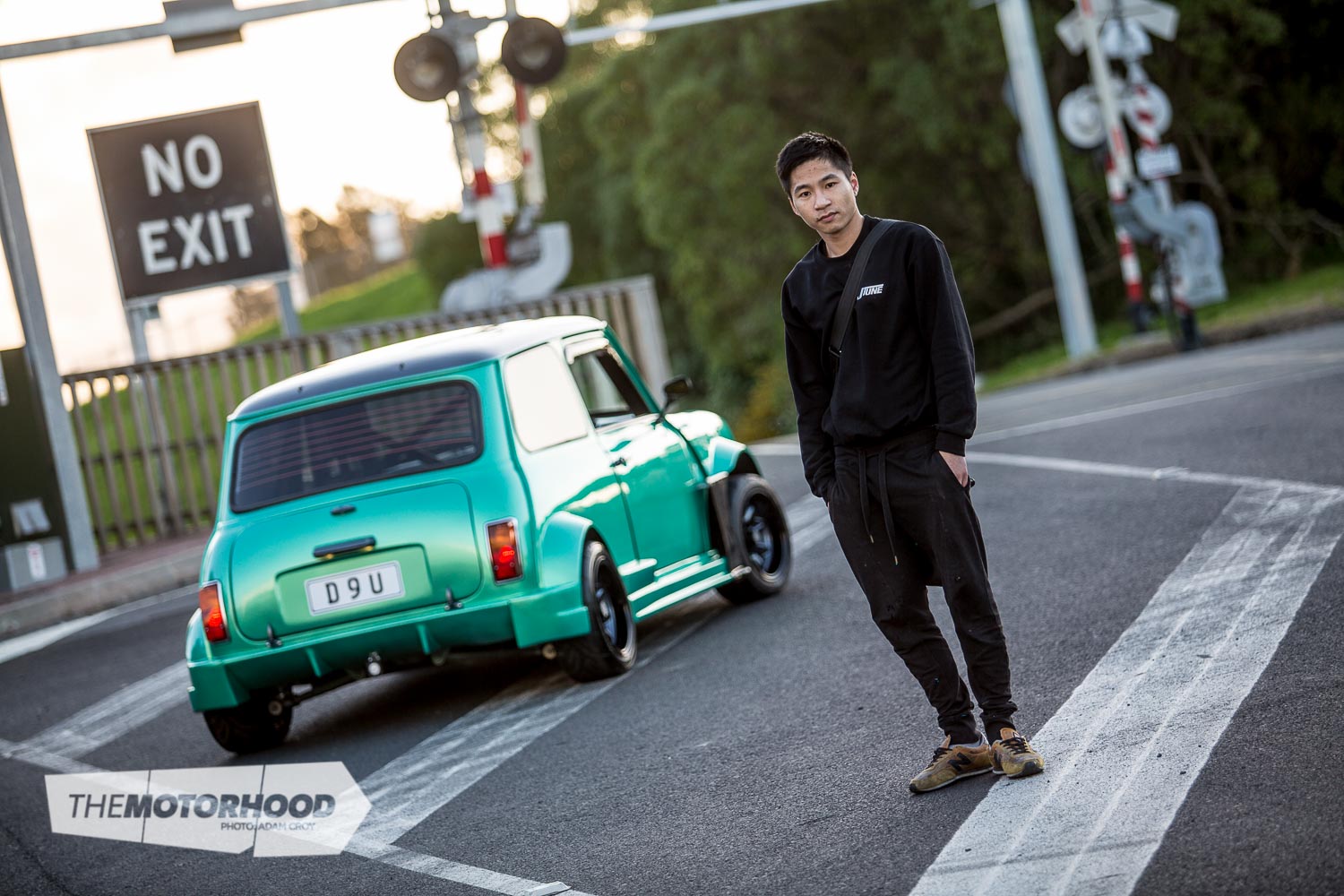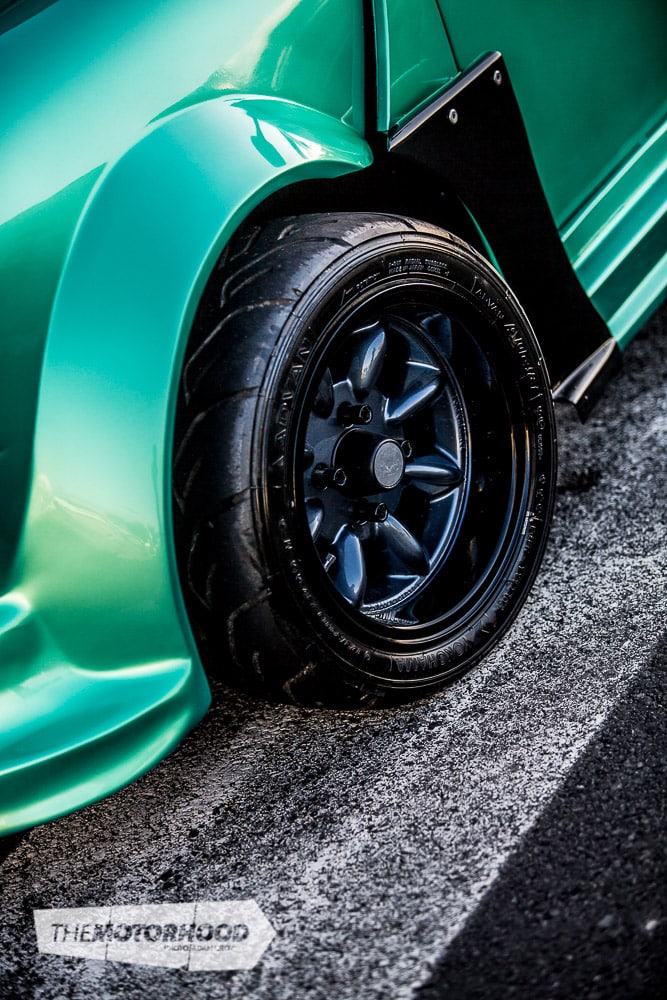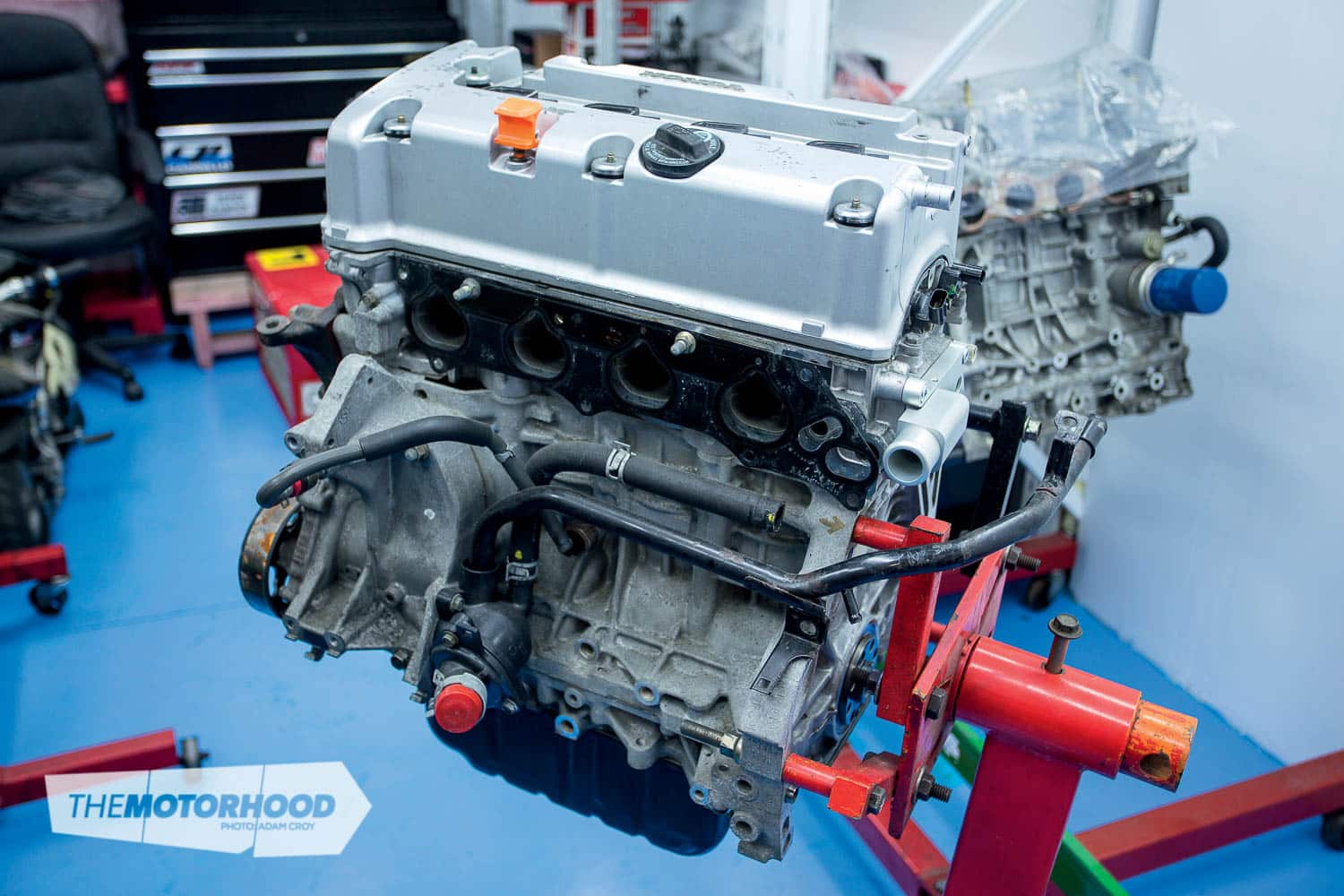data-animation-override>
“What do you do when you want to stand out? Build a 4WD K24-powered Mini, of course ”
We live in a wild time, a time when lines are blurred more than ever before, when a motoring icon can be redefined, rejuvenated and reimagined just by a few clicks of a button on a keyboard. Then, thanks to the wonders of modern logistics, a few weeks later boxes of wizardry will appear on your doorstep, all arriving from the far corners of the globe to transform your 1974 Morris Mini into a 4WD monster.

This simple process was enough to convince Jtune staffer Peter Wu not to purchase the Viper he’d initially wanted, but instead to build something quite literally out of the box. “Anyone can have a Viper, but no one here has a 4WD K24-powered Mini,” he explained. Although his decision might seem a little off to most, when you consider that the MTK kit transforms the humble Mini into something which would hold its own against the American supercar, you can definitely see his side of the argument.

The kit he wanted is available in both FWD and 4WD versions, and Peter went straight in the deep end and ordered both the front and rear tubular subframes, which replace the 1970s suspension (basically, rubber bump stops and shocks) with adjustable tubular A-arms, QA1 coilovers, and a fully adjustable rear end based on an MX-5. It’s effectively a 4WD Honda CR-V shoehorned into the frame of a Mini, with the adjustability to rival any track car.

Popping the boot reveals a large-capacity custom fuel cell built by Ronnie Lim at RSL. To simplify the fuel system the AEM fuel regulator is mounted directly to the tank, requiring only a single feed line to the engine
If you have ever pedalled a Mini before, you will understand the potency such a combination promises. Add to that the capacity increase from 1000 to 2400cc, and things really start to get interesting.

Peter is quick to point out it’s not the easiest car to drive, the lack of cabin space means anyone bigger than 1.7m will struggle big time. A Wilwood pedal box is tucked tightly against the tunnel
But the supposed easy installation of this bolt-in kit wasn’t all smooth sailing in reality — the engine mounts didn’t seem to work. Peter believes they were for a B-series engine, so he had a set made up locally to suit the K24A taken from a Honda CR-V, along with its 4WD gearbox. The team at Quest Fabrication took care of installing the subframes, and tied it together with a roll cage.

Originally there were plans to fit a turbo or supercharger to really bring the powerplant alive, but that would require some serious fabrication work, as you can see that the engine has swallowed up any and all spare space as it is.

Providing the four-wheel drive is a transfer case found in the later-model Honda CR-V. Honda blessed the CR-V with some serious running gear, including the K24A, and as a consequence they are a very sought-after car at wreckers
Instead the team made use of the swag of aftermarket components available for the K series, including KVM cams, an RBC intake manifold and plenty of billet alloy components, including the 70mm fly-by-wire throttle body. Controlled by an AEM Series 2 ECU, the combination produces 170kW at all four wheels, which is 100–140 more kilowatts that the old A-series donk.
MTK also supplied the one-piece flip front, which Peter then modified with fender flares and the front spoiler to fit the extra-wide track of the 13-inch Minilites. He also took care of the rest of the kit, made from a few discarded Honda body kits found lying around the shop, cut down and moulded to the body. Add to that the carbon side canards, and you have a very aggressive-looking machine.

Peter also took care of the custom sound install, and the custom dash made from many hours of shaping foam, before producing it using fibreglass.
A build of this magnitude is bound to throw a few spanners in the works, and with something so highly modified, getting the car road legal is proving the biggest hurdle. As with any build where the suspension geometry has changed, drawings showing the new geometry were required by the LVVTA. Peter tells us the guys at MTK met his email request with a cold shoulder, we suspect as they feared he would copy them, so he went through the costly process of having his own set drawn up locally.

Getting in and out of the Mini is not for the tall or big-boned thanks to the full-containment Kirkey alloy seats
Next the car will go under an X-ray to have each and every welded joint examined to ensure its strength. Once these are done the Mini will get the tick, and Peter can put a few more kays under his belt than the few shakedown passes have allowed.
Already he tells us it’s handful to drive, as the Nardi fighter wheel, the Wilwood pedal box and aggressive alignment make for a real road rocket, albeit one with pocket-size proportions.

It may be a tiny car, but the big build has developed into a weapon. And from the quick blast around the block for the photoshoot we can tell it gets as many looks as any Viper ever would. We reckon Peter has made the right decision to go this route, as what he has created (mostly with his own hands) is a one-off. No matter how far he dares to venture, he will never pull up to the lights to find and identical machine lined up and waiting. To us, that makes this project so much cooler than a supercar.
1974 Morris Mini
Heart
- Engine: Honda K24A, 2400cc, four cylinder
- Block: Factory
- Head: K24A RBB head, Buddy Club TI retainer/springs, KVM camshafts
- Intake: RBC manifold, S90 70mm throttle body
- Exhaust: 4-into-1 headers, 2.5-inch stainless system, looped mufflers
- Fuel: ID1000 injectors, Bosch 044, AEM FPR, K-Tuned fuel rail, custom fuel cell
- Ignition: Factory
- ECU: AEM Series 2
- Cooling: SW20 alloy radiator
- Extra: Custom oil catch can, breather tank
Drive
- Gearbox: Honda CR-V re-ratio, billet K-Tuned shifter
- Clutch: Exedy Full Race organic
- Flywheel: Exedy
- Diff: (F) Honda Type R LSD, (R) Mazda MX-5
- Other: MTK front and rear tubular subframes
Support
- Struts: QA1 82 series coilovers
- Brakes: (F) Wilwood four-pot calipers, 9.5-inch cross-drilled and slotted rotors (R) Mazda MX-5
Shoes
- Wheels: 13×8-inch Minilites
- Tyres: Advan AO48 semi slick
Exterior
- Paint: Lime candy
- Enhancements: Jtune custom kit, one-piece front end, modified C-West Honda Civic sideskirts, modified Buddy Club rear bumper, LED headlights
Interior
- Seats: (F) Kirkey alloy seats
- Steering wheel: Nardi fighter
- Instrumentation: AIM dash, AEM A/F gauge
Power: 175kW at all fours

Driver profile
- Driver/owner: Peter Wu
- Location: Auckland
- Occupation: Head of Jtune style department
- Build time: Eight months
- Length of ownership: Eight months
- Thanks: Jtune
This article was originally published in NZ Performance Car Issue No. 226. You can pick up a print copy or a digital copy of the magazine below:























